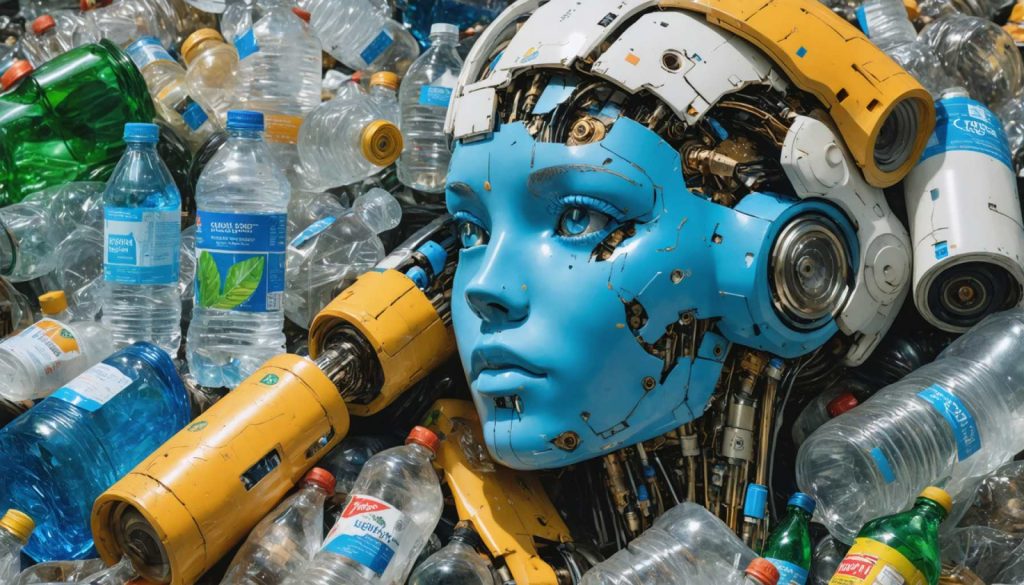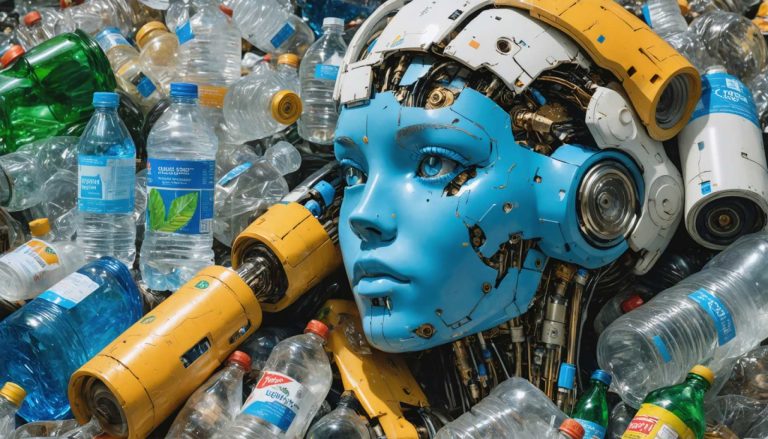
- AMP Robotics is revolutionizing recycling with AI-powered robots, dramatically improving sorting efficiency and reducing contamination in waste streams.
- The company’s advanced AI platform uses deep learning to identify recyclables with precision, distinguishing materials based on patterns, colors, textures, and logos.
- AI innovations are not limited to AMP; other companies like Greyparrot and Recycleye are enhancing waste management globally, promoting a circular economy.
- AI is also influencing sustainable packaging design, with firms like WestRock exploring eco-friendly fiber alternatives to traditional plastics.
- Municipalities such as Tasmania are integrating advanced AI systems in materials recovery facilities for improved recycling efficiency.
- This technological shift not only optimizes waste management but also inspires broader societal engagement in effective recycling practices.
- AI’s integration in recycling foretells a significant environmental impact, fostering cleaner, greener communities.
Amidst the cacophony of machinery and the pervasive smell of waste, a silent revolution is underway. Deep within the bustling halls of recycling centers, robots endowed with artificial intelligence are glimpsing a future where recycling isn’t just hopeful rhetoric but a meticulously orchestrated ballet of efficiency and sustainability. At the forefront of this transformation is AMP Robotics, whose headquarters are nestled in the heart of Colorado, imbuing a cutting-edge technological tang to this traditional industry.
At the core of AMP Robotics lies a technological marvel: an advanced AI platform employing deep learning to scrutinize a myriad of waste images. This technological prowess enables their robotic systems to discern recyclables with uncanny precision—picking out plastic bottles and aluminum cans amid mountains of garbage with astounding speed and accuracy. Vividly, the robots rely on recognizing patterns in colors, textures, shapes, and brand logos, thus outstripping the capabilities of human counterparts.
AMP is addressing a monumental problem plaguing the recycling industry: contamination. By significantly enhancing sorting efficiency, these AI-powered robots are reducing impurities in recyclable material streams, thereby reclaiming more resources and elevating the quality of recovered materials. With the U.S. recycling rate stagnant for years, AMP’s innovations present a timely intervention to recover more recyclables from the waste we unwittingly dismiss.
But AMP Robotics is not journeying alone. Across the globe, similar technologies spearheaded by companies like Greyparrot and Recycleye are rippling a transformation in waste management. Greyparrot’s AI analytics track waste streams with precision, catalyzing the transition to a circular economy by optimizing resource recovery. Meanwhile, Recycleye’s robotic arms are employed to enhance sorting processes, fortifying the integrity of recycled materials and heightening operational productivity.
AI’s applications in recycling go beyond mere sorting. Visionaries at companies like WestRock are turning to AI for designing sustainable packaging solutions that eschew traditional plastics in favor of fiber alternatives that are both functional and eco-friendly. Municipalities, such as Tasmania’s $24 million materials recovery site, are adopting these advanced systems, processing recyclables with newfound efficiency and clarity.
The potential ripple effects of these technological advancements extend to every facet of recycling and beyond. By transforming how recycling centers operate, AI not only grasps the tangible benefits of sustainable practices but also ignites a broader societal reverberation—encouraging individuals to engage more deeply with recycling efforts they now know are effective.
This AI-fueled metamorphosis signifies a pivotal chapter in recycling; a story where technology and sustainability align seamlessly. As innovation continues to retune the symphony of waste management, communities stand to witness a remarkable change: a cleaner, greener world crafted from the very refuse we once deemed redundant.
The AI Revolution Transforming Recycling: Unlocking Efficiency and Sustainability
Understanding the Cutting-Edge Advancements
AMP Robotics’ pioneering AI platform is more than just a technological feat; it’s a game-changer in the recycling industry. Harnessing deep learning, AMP’s robots achieve a revolutionary level of accuracy in sorting recyclables, identifying materials with remarkable precision. By recognizing patterns in visual cues, AMP’s technology streamlines sorting processes and dramatically reduces contamination in recycling streams—resulting in higher quality recovered materials.
Expanding Applications of AI in Waste Management
While AMP Robotics leads the charge, other innovators like Greyparrot and Recycleye have emerged globally to redefine recycling efficiency. Greyparrot’s AI analytics meticulously track waste, promoting a shift towards a circular economy by enhancing resource recovery rates. Meanwhile, Recycleye’s robotic systems improve sorting accuracy, thus reinforcing the quality of recycled outputs.
The role of AI in recycling isn’t limited to sorting. Companies like WestRock are employing AI to innovate sustainable packaging solutions. These initiatives focus on reducing reliance on plastics by developing functional, eco-friendly fiber alternatives that marry sustainability with usability.
Current Market Trends & Industry Projections
The market for AI in waste management is projected to grow significantly in the coming years. According to a report by Allied Market Research, the global AI waste management market, valued at $1.62 billion in 2020, is expected to reach $5.22 billion by 2030, growing at a CAGR of 14.6%. This growth is driven by an increasing need for efficient waste management solutions and stringent regulations promoting sustainable practices.
Addressing Common Concerns: Security & Sustainability
While AI offers numerous benefits, it also raises concerns about the security of data and the need for sustainable implementation. Ensuring data privacy when processing vast amounts of waste-related information is critical. Moreover, the energy consumption of AI systems must be managed effectively to prevent countering the environmental benefits these technologies offer.
Actionable Tips for Engaging with AI in Recycling
1. Stay Informed: Keep abreast of AI advancements in recycling by following industry reports and news from leading companies such as AMP Robotics.
2. Encourage Local Adoption: Advocate for the implementation of AI-driven solutions in your local community’s recycling centers to improve sorting efficiency and material recovery.
3. Support Sustainable Packaging: Choose products with sustainable packaging developed through innovative AI solutions to contribute to a circular economy.
4. Consider AI Investments: Businesses and municipalities should consider investing in AI technologies to boost recycling rates and enhance resource recovery.
Conclusion: A Call to Embrace the Future
AI in recycling marks a promising step towards environmental sustainability. By enhancing recycling’s efficacy, AI not only advances waste management but also encourages individual participation in recycling initiatives by demonstrating tangible results. As these technologies evolve, the potential for a cleaner, greener world becomes increasingly attainable. Engage with this transformation today by understanding, supporting, and advocating for AI-driven advancements in your community.



